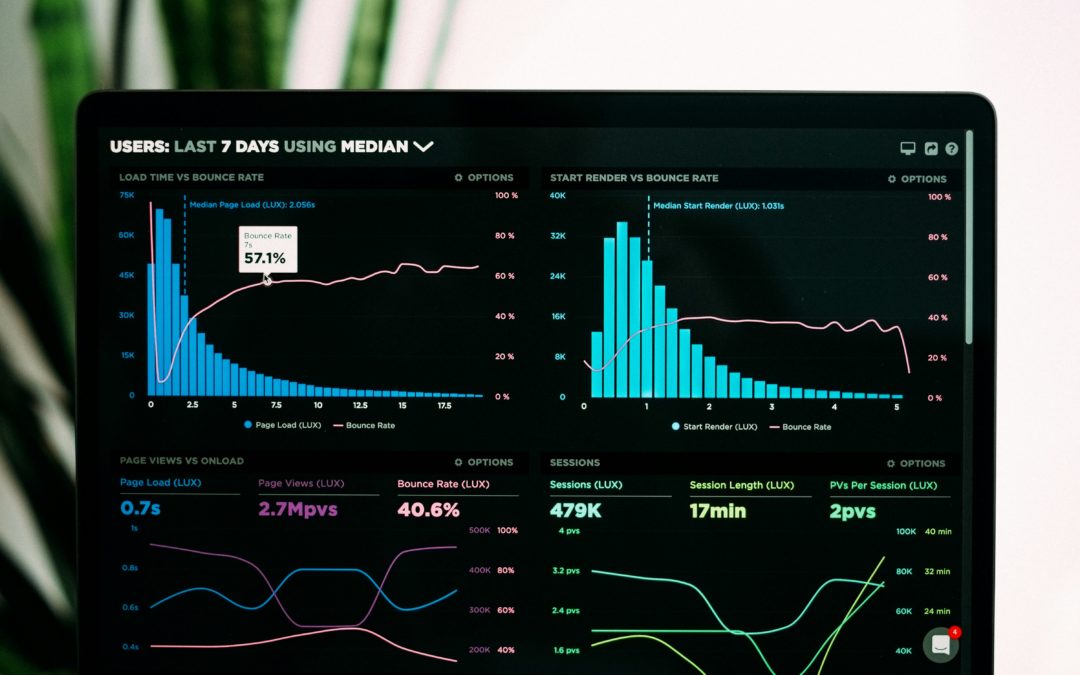
by Jonathan P-Wright | Mar 26, 2025 | Business News, Latest, Music News |
Photo by Luke Chesser on Unsplash
If you’re a content creator on YouTube, one of the most important metrics you monitor is the number of views your videos receive. Views are not just a measure of popularity but also influence monetization, audience reach, and overall engagement. However, many creators don’t fully understand what qualifies as a “view” on YouTube.
For standard long-form YouTube videos, the platform has a clear benchmark: a view is counted when a viewer watches at least 30 seconds of the video. This system ensures that only meaningful interactions contribute to a video’s total views, preventing cases where users scroll past videos without actually watching them.
However, with the rise of short-form content, YouTube introduced a separate set of rules for tracking views on YouTube Shorts. Unlike traditional videos, YouTube did not apply the 30-second rule to Shorts. Instead, a view was counted after just a few seconds of watch time. The exact duration was never publicly disclosed, leaving creators guessing about what really contributed to their view counts.
But now, a major change is coming that will redefine how views on YouTube Shorts are calculated—and it could have a significant impact on how creators interpret their success.
YouTube Shorts View Counts Are Changing
Starting March 31, 2025, YouTube will change how it counts views on YouTube Shorts. Unlike before, when Shorts needed to be watched for a few seconds to be counted as a view, now a view will be counted the moment a video begins to play.
This means that the instant a user sees a YouTube Shorts video in their feed—even if they scroll past it almost immediately—YouTube will register it as a view.
Furthermore, because YouTube Shorts videos loop automatically, every time a video restarts from the beginning, YouTube will count it as a new view. This differs greatly from the way views have traditionally been counted on the platform and could lead to significantly higher view counts for Shorts moving forward.
According to YouTube, this update comes in response to feedback from content creators. Many YouTubers who specialize in Shorts have argued that the old system did not accurately reflect audience exposure. The new approach aims to give creators a better understanding of how often their videos are surfaced and seen, even

by Jonathan P-Wright | Mar 26, 2025 | Latest |
Photo by digitale.de on Unsplash
Milwaukee Bucks’ star point guard Damian Lillard, widely recognized as one of the most dynamic and consistent players in the NBA, has been sidelined indefinitely after being diagnosed with deep vein thrombosis (DVT) in his right calf. The 34-year-old athlete, who has been a pivotal player for the Bucks since joining the team in late 2023, will now have to shift his focus from the court to his health and recovery as he navigates this serious medical condition.
Lillard’s condition was confirmed by the Milwaukee Bucks organization on Tuesday, with the team announcing that their medical staff discovered a blood clot in his calf. As a result, Lillard has been placed on blood-thinning medication to stabilize the clot and prevent further complications.
Understanding Deep Vein Thrombosis and Its Impact on Athletes
Deep vein thrombosis is a condition that occurs when a blood clot forms in a deep vein, usually in the legs, but it can also develop in other areas, such as the arms or pelvis. DVT is considered a serious medical condition because if a clot breaks loose, it can travel to the lungs, leading to a pulmonary embolism, which can be life-threatening.
For professional athletes, the risk factors for developing DVT can include:
- Frequent travel (especially long flights, which can reduce blood circulation).
- Intense physical exertion, leading to injuries or inflammation that can contribute to clotting.
- Dehydration, which thickens the blood, increasing the risk of clot formation.
- Genetic predisposition or underlying health conditions that may go undetected.
Lillard’s Response: Prioritizing Health Over Basketball
Lillard has since addressed the news in a statement given to his close friend and NBA insider Chris Haynes, expressing both disappointment and gratitude.
“It’s unfortunate that something outside of my control would come up,” Lillard said. “Along with the Bucks’ medical staff, our priorities are to protect my health and safety. As much as I love basketball, I need to be there for my kids and my family.”
Despite his love for the game, Lillard has made it clear that his well-being and his family’s well-being take precedence over basketball. He further expressed his gratitude to the Bucks organization for their swift and proactive response to his medical emergency.
“I’m grateful the Bucks acted quickly on this,” Lillard stated. “They have been supportive and proactive throughout this process. I look forward to moving past this and continuing my career.”
His words reflect both frustration and hope, as he acknowledges the uncertainty of the situation but remains optimistic about his recovery and future return to the court.
Bucks Organization’s Commitment to Lillard’s Recovery
Milwaukee Bucks general manager Jon Horst also released a statement, emphasizing the team’s commitment to Lillard’s health and recovery.
“Damian’s health is our number one priority,” Horst said. “We will support him as he moves through this weekly process of strict criteria to ensure that it is safe for him to return to play. Doctors have indicated that his situation is very unlikely to occur again.”
Horst also expressed relief that the medical team identified and treated the clot quickly, which is crucial in preventing further complications.
“We are thankful that this was identified and medicated quickly, which helps with the recovery,” he added.
Lillard will undergo regular testing and will be closely monitored to ensure that his condition remains stable before any decisions are made regarding his return to play.
What Does This Mean for the Bucks’ Season?
Lillard’s indefinite absence poses a significant challenge for the Milwaukee Bucks, who rely heavily on his playmaking abilities and scoring prowess. Since his arrival in late 2023, he has become a key figure in the team’s offensive strategies.
Before his diagnosis, Lillard had been averaging impressive numbers, making him an essential player in the Bucks’ pursuit of another NBA championship. His absence will likely shift responsibilities onto teammates like Giannis Antetokounmpo and Khris Middleton, who will need to step up in his absence.
Additionally, the Bucks coaching staff will have to adjust their strategies, possibly relying more on their bench players to compensate for Lillard’s lost minutes. Young guards like Malik Beasley and Patrick Beverley may see increased roles in the coming games

by Jonathan P-Wright | Mar 26, 2025 | Business News, Latest |
Photo by freestocks on Unsplash
In the ever-evolving world of online shopping, Amazon has once again raised the bar with the launch of a groundbreaking AI-powered feature designed to make your shopping experience even more personalized. The tech giant, known for its continuous innovation, introduced a new tool called Interests, which aims to make product discovery a breeze for shoppers. This new feature leverages generative AI to enhance how users interact with the platform, ultimately delivering recommendations that are more closely aligned with individual preferences, hobbies, and desires.
Revolutionizing Personalization in E-Commerce
Amazon’s new tool is a notable step in its ongoing efforts to make the shopping experience more intuitive and relevant. Through a simple blog post released on Wednesday, Amazon shared the details of the feature, explaining that Interests uses sophisticated algorithms and machine learning models to scan the vast expanse of Amazon’s inventory and surface items that cater to a shopper’s unique tastes. By understanding individual interests more accurately, the AI-powered assistant helps eliminate the overwhelming clutter of irrelevant products, offering shoppers a curated selection of items that resonate with their personal preferences.
For instance, if you are a die-hard NFL fan, the AI might suggest football apparel, jerseys, or accessories. If you’re someone who loves hitting the links, it could recommend the latest golf equipment or apparel. For those who are passionate about photography, it may point you toward high-end cameras, lenses, tripods, and other photography gear. No longer will you have to wade through countless irrelevant listings. Instead, Amazon’s AI will take over the heavy lifting, presenting products that are most relevant to you.
Conversational Search: A New Way to Shop
One of the most compelling aspects of Amazon’s new AI feature is its ability to understand conversational language. Instead of typing in generic search terms or relying on keywords, users can simply express their desires in a more natural, conversational tone. For example, a shopper could type “brewing tools and gadgets for coffee lovers,” and the AI would instantly begin scanning Amazon’s vast store to deliver relevant products that match the search request. Whether you’re a coffee connoisseur, an avid gamer, or a home chef, you can now shop more easily and efficiently by simply articulating your preferences in plain English.
This move aligns with the broader trend of conversational AI, which is becoming increasingly prevalent across various tech platforms. By allowing users to engage with the platform in a more human-like manner, Amazon is taking the shopping experience to the next level. Gone are the days of clunky, difficult-to-use search functions that require precision and effort. Instead, Amazon’s Interests tool will make product discovery as natural and effortless as holding a conversation with a friend.
Tailored Recommendations Based on Your Budget
In addition to providing recommendations based on your personal interests, the Interests feature goes one step further by considering your budget. Amazon’s AI can take into account price limits, helping you find the best products within your specified price range. This added layer of personalization ensures that shoppers are not only discovering items they like but also within their financial means.
For example, if you’ve set a maximum budget of $50 for a new set of golf clubs, the AI will prioritize product recommendations within that price range. The idea is to save you time and frustration by eliminating products that exceed your budget, ensuring that your shopping experience remains both enjoyable and affordable.
Amazon’s Growing AI Capabilities
The introduction of Interests is just one example of Amazon’s ongoing commitment to integrating AI into its platform. Over the past few years, the company has rolled out a variety of AI-driven features designed to enhance the customer experience. One of the most notable examples is the evolution of Alexa, Amazon’s voice assistant, which has become increasingly conversational and intuitive. Alexa is now capable of handling more complex queries and offering personalized recommendations based on user preferences and habits.
Another example of Amazon’s AI advancements is Rufus, the company’s existing AI-powered shopping assistant. Rufus uses natural language processing to assist customers in making informed purchasing decisions by providing relevant product details and recommendations. The new Interests feature, however, takes this to the next level, adding a layer of context and personalization based on the shopper’s stated interests, hobbies, and even their budget.
In addition to these consumer-facing tools, Amazon has also integrated AI into its internal systems, from warehouse automation to inventory management, ensuring that the company stays ahead of the curve in a rapidly changing technological landscape. By combining these advancements with its extensive product catalog and user data, Amazon is positioning itself as a leader in the AI-powered e-commerce space.
Are We Seeing a True Revolution in E-Commerce?
While Amazon’s Interests feature is undoubtedly a step forward in the quest for a more personalized shopping experience, some analysts believe that this tool is simply an extension of existing personalization systems that have long been used in retail. Sucharita Kodali, an analyst at market research firm Forrester, pointed out that the feature might not be as revolutionary as it appears. According to Kodali, it feels like “just another recommendation engine with a preference center layer.”
Kodali’s observation highlights an important point: personalization has been a core feature of e-commerce for years. Platforms like Amazon have long used algorithms to recommend products based on users’ past browsing behavior, previous purchases, and demographic data. What makes Interests different, however, is its ability to process more nuanced inputs like conversational language and budget constraints, which can offer a more tailored shopping experience.
That said, it’s clear that AI’s role in e-commerce is continuing to evolve. As machine learning algorithms become more sophisticated, they have the potential to transform how online shopping works, enabling platforms like Amazon to offer hyper-personalized recommendations in real time. Interests is one of the first examples of how these capabilities are beginning to be implemented on a large scale.
Amazon’s Spring Sale: The Perfect Time to Try Out the Feature
The launch of the Interests feature comes at an opportune moment for Amazon, coinciding with the company’s highly anticipated Spring Sale. As shoppers flock to Amazon’s website and mobile app to take advantage of discounts on electronics, home goods, clothing, and more, the new AI feature will be available to a select group of customers in the U.S. who have early access. The Spring Sale provides the perfect backdrop for testing out the new tool, as it will allow customers to seamlessly integrate AI-driven recommendations into their shopping experience while taking advantage of significant savings.
For those with early access, the Interests feature can be found under the “Me” tab in the Amazon Shopping app, making it easily accessible for anyone looking to explore the latest in AI-driven shopping. Amazon has indicated that the feature will be rolled out to more customers in the coming months, allowing a larger audience to take advantage of the new tool.
The Future of Shopping: AI as a Personal Assistant
As AI technology continues to advance, it’s becoming clear that the role of personal assistants in e-commerce will only grow. The introduction of Interests represents Amazon’s bold vision for the future of online shopping, where AI is not just a tool but a true assistant capable of understanding your needs and preferences.
With this new feature, Amazon is setting the stage for a future where shopping is not just about purchasing products but about discovering items that fit seamlessly into your life and lifestyle. Whether you’re an avid sports fan, a budding photographer, or

by Jonathan P-Wright | Mar 26, 2025 | Business News, Latest |
Photo by Never Dull Studio on Unsplash
In today’s digital age, bullying extends far beyond the physical boundaries of schoolyards and classrooms, with social media becoming a significant platform where such behavior often unfolds. This digital bullying can be just as harmful, if not more so, than traditional forms of harassment, but until now, teachers and school administrators have had limited means of responding to such incidents when they occur online. In an effort to combat this growing issue, Meta, the parent company of Instagram, has introduced a new initiative aimed at giving schools more power to address online bullying. The program is designed to assist educators in reporting instances of cyberbullying that occur on Instagram, which can often be difficult to manage due to the platform’s vast and sometimes anonymous nature.
Meta’s School Partnership Program for Instagram is now available to middle and high schools across the United States. The initiative was created in response to growing calls from parents and educational professionals who wanted a more structured and supportive approach to handling online bullying. The program enables teachers, school staff, and administrators to directly report troubling Instagram posts and profiles that violate the platform’s Community Guidelines, potentially giving them a quicker way to resolve issues that may otherwise go unnoticed by authorities.
Meta has pledged to treat requests from schools with urgency. According to reports from Engadget, the company guarantees that it will respond to these reports within 48 hours, offering a level of accountability and speed that has often been missing in previous efforts to combat cyberbullying. Schools that utilize this new feature will be kept in the loop throughout the process, receiving timely notifications regarding the actions that Instagram has taken in response to their reports. A new section within Instagram’s interface, labeled “School Resources,” will allow schools to track their complaints and monitor the progress of the reports they’ve submitted.
One of the key components of the program is the provision of educational resources. Meta is working to ensure that teachers, students, and parents are equipped with the knowledge they need to navigate the app safely. These resources will address various aspects of online safety, ranging from how to recognize and handle cyberbullying to understanding privacy settings and content moderation. By providing these materials, Meta aims to foster a more informed and responsible community both inside and outside the classroom.
For schools that decide to participate in the program, there is an additional benefit. Their Instagram profiles will display a banner indicating their official partnership with Instagram. This banner is not only a sign of their commitment to ensuring a safe digital environment but also serves as an informative tool for others. When users tap on the banner, they will be directed to further information about the program, including how it works and how to get involved.
The development of this initiative was a collaborative effort, with Meta working closely alongside two prominent educational organizations: the International Society for Technology in Education (ISTE) and the Association for Supervision and Curriculum Development (ASCD). These partnerships ensure that the program is grounded in educational best practices and that schools can access the expertise needed to handle online issues effectively. In early testing, the program was piloted in 60 schools, and Meta reported that the results were encouraging, with promising early feedback regarding its effectiveness.
While the program is now open to schools nationwide, there is still a waitlist for schools interested in joining, and Meta has encouraged institutions to sign up if they wish to take part. This initiative reflects a growing recognition of the need to address the challenges that come with online interactions, especially in the context of children and teenagers who are navigating these spaces during critical developmental stages.
The launch of this partnership comes just as Meta has rolled out another feature aimed at improving safety for younger Instagram users. Last year, the company introduced Teen Accounts for users under the age of 16. These accounts are set to private by default, meaning that only approved followers can see the user’s posts and interact with them. Moreover, parents have the ability to adjust certain settings on their child’s account, which further enhances safety and ensures that kids have more control over their online presence.
However, despite these advancements, Meta has also faced mounting scrutiny regarding its role in fostering environments that can lead to harmful addiction and overuse among younger audiences. The company has been hit with multiple lawsuits, alleging that its features are designed in ways that hook children and adolescents into using Instagram and its sister platforms for prolonged periods. Critics argue that these platforms are deliberately engineered to keep users engaged for longer, which can lead to negative consequences such as mental health issues, decreased academic performance, and exposure to inappropriate content.
Adding to the complexity of the issue, several countries around the world have taken steps to limit or even ban social media use for minors. Governments are grappling with the dangers associated with young people’s increasing use of digital platforms, and many are taking proactive measures to regulate these spaces. Some countries have imposed age restrictions on social media accounts, while others have gone further by banning certain platforms outright in an attempt to protect children from the risks of online exposure.
In light of these challenges, Meta’s introduction of the School Partnership Program is an important step toward addressing one of the most persistent issues facing schools today: cyberbullying. The program not only provides schools with the tools they need to combat harmful behavior on social media but also helps to educate students and parents on how to protect themselves in the digital world. By giving educators a more direct way to report bullying incidents and track responses from Instagram, Meta is making an effort to bridge the gap between traditional forms of bullying and the new challenges posed by the digital age.
Furthermore, Meta’s collaboration with education professionals through ISTE and ASCD helps ensure that this initiative is not just a reactive measure but also a proactive one. The inclusion of educational resources will allow schools to build a culture of online responsibility, teaching students not only how to be safe online but also how to treat others with respect and kindness. This aspect of the program aligns with a broader movement in education, where digital literacy and online ethics are becoming an increasingly important part of the curriculum.
As online spaces become ever more integrated into our daily lives, it is clear that addressing the issue of cyberbullying requires a multifaceted approach. Meta’s School Partnership Program is a valuable tool in this fight, providing schools with resources and support to tackle online harassment more effectively. By ensuring that educators have a way to report problematic content and engage directly with Instagram’s team, the platform is empowering schools to take a stand against cyberbullying, ultimately contributing to a safer and more positive online environment for everyone.
The success of this initiative may set the stage for similar partnerships between social media platforms and educational institutions in the future. As technology continues to evolve and become an even more integral part of our lives, it will be essential for both tech companies and schools to work together to protect young people from the risks associated with online behavior. Meta’s program is a positive example of how this type of collaboration can help create safer, more responsible online spaces for future generations.







RECENT COMMENTS